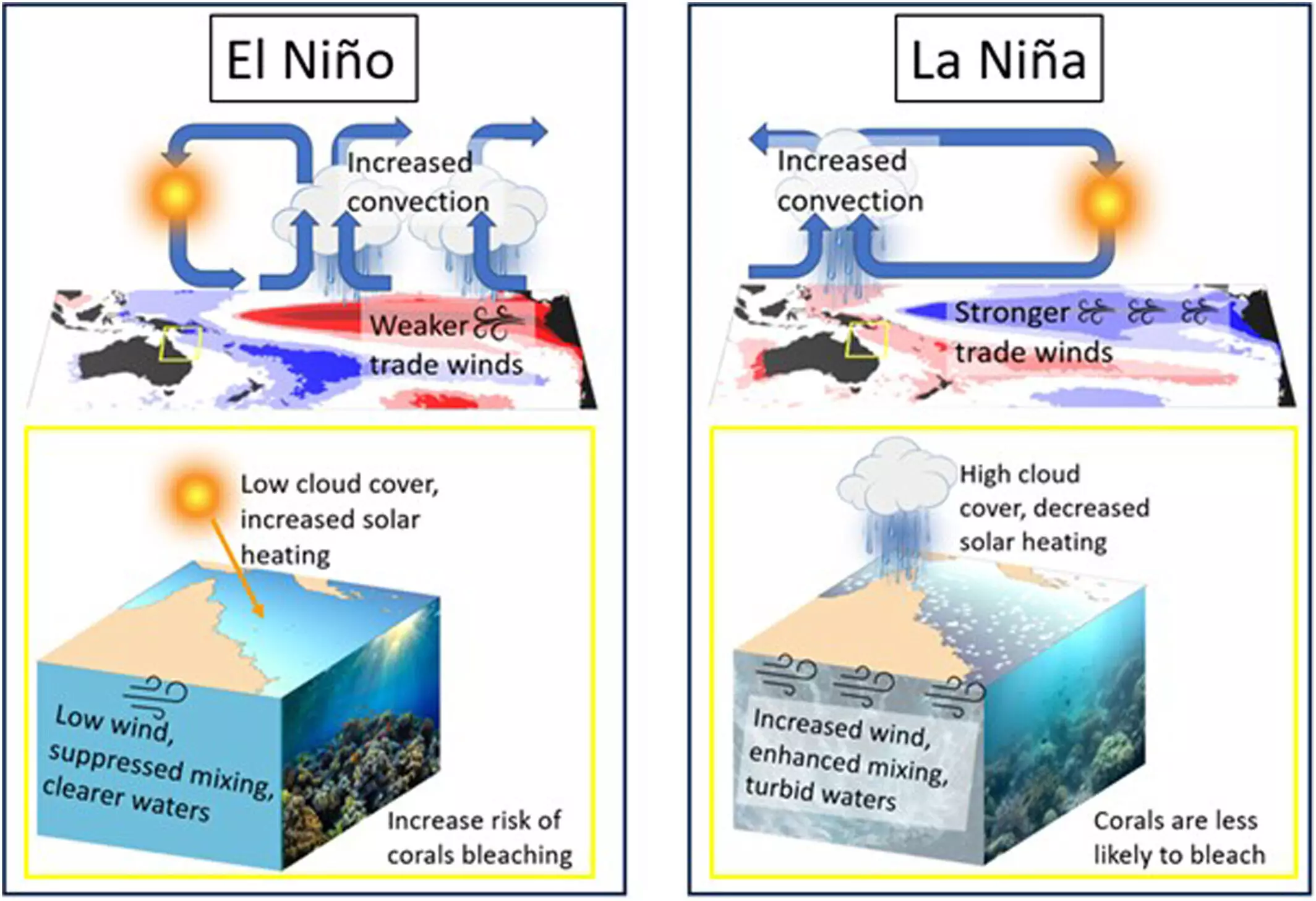The Great Barrier Reef (GBR) is a vast coral ecosystem located along Australia’s northeastern coast, known for its biodiversity, cultural importance, and economic value. However, rising ocean temperatures due to climate change pose a serious threat to this delicate ecosystem. A recent study has shed light on the impact of two major climate phenomena – the Madden-Julian Oscillation (MJO) and El Niño Southern Oscillation (ENSO) – on coral bleaching events in the GBR.
The study, titled “Combined Role of the MJO and ENSO in Shaping Extreme Warming Patterns and Coral Bleaching Risk in the Great Barrier Reef”, highlights how these climatic phenomena affect weather conditions over the GBR, leading to increased coral bleaching risk. Corals in the GBR are particularly sensitive to weather changes. Calm, sunny weather tends to raise ocean temperatures, making corals more susceptible to bleaching, while stormy, rainy weather can cool the ocean, providing some protection to the corals.
The study found that while ENSO influences weather patterns over the GBR on a seasonal scale, the MJO can alter these patterns on a shorter, sub-seasonal timescale. This can lead to unexpected fluctuations in ocean temperatures and coral health. Catherine Gregory, the lead author of the study, emphasized the importance of considering multiple drivers, beyond ENSO, in understanding extreme warming and coral bleaching events in the GBR.
Understanding how ENSO and MJO influence weather patterns can help in anticipating coral bleaching events. While ENSO phases like El Niño and La Niña impact ocean temperatures, the MJO can disrupt these patterns, leading to unexpected weather variations. Gregory’s research showed that the relationship between the ENSO index and ocean temperatures in the GBR was not as strong as previously thought, highlighting the need to consider other influential factors such as the MJO.
The findings of the study underscore the need for comprehensive forecasting models that take into account the impacts of both ENSO and MJO to better predict and manage coral bleaching events. As climate change continues to threaten coral reefs, understanding these climatic drivers and their interactions is crucial for developing adaptive strategies to protect the future of the GBR.
The study highlights the complex relationship between climate patterns and coral bleaching events in the Great Barrier Reef. By considering the influence of the Madden-Julian Oscillation and El Niño Southern Oscillation, researchers can gain valuable insights into the factors contributing to coral bleaching and work towards protecting this invaluable ecosystem for future generations.


Leave a Reply